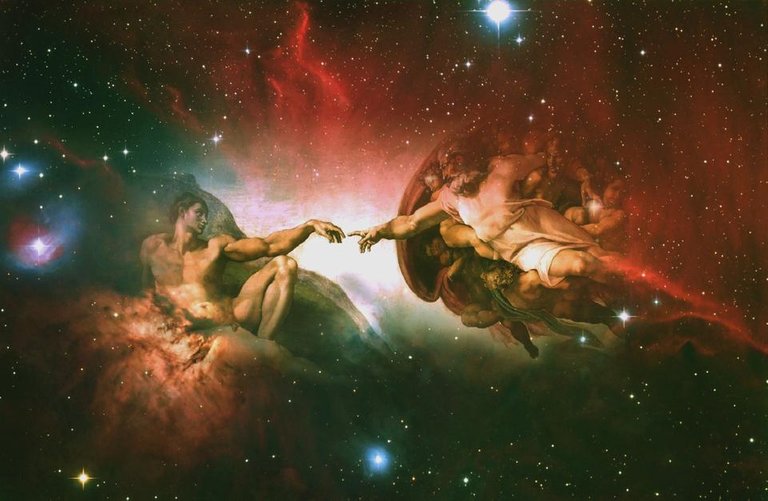"The Creation of Adam" is the most famous fresco of the set of nine paintings depicting the Genesis stories that Michelangelo Buonarroti painted on behalf of Pope Julius II in 1508 in order to decorate the vault of the Sistine Chapel. Completing this work took about four years, and no wonder, the totality of these paintings occupies more than 500 square meters.
The central theme of the work is based on the episode of the creation of Adam described in the Old Testament, where the moment in which God after having created the light and the planets is arranged to continue his work giving life to a be in his image and likeness.
Like most of the paintings that we have analyzed before, this maintains an important influence at present, it is one of the most representative icons of the Renaissance, Christian mythology and anthropocentrism.
Over the centuries it has inspired faith in believers by generating a sense of closeness to a god that has anthropomorphic characteristics. But today we are still filled with questions and concerns, it is still unclear who is the woman who holds God by the arm and also discusses whether the mantle that covers God and his angels has the shape of a brain human.
The Sistine Chapel was built between 1475 and 1481 at the request of Pope Sixtus IV, this is the name by which we know it. Although Michelangelo painted the vault and the imposing mural "El juicio final", he was not the only artist who contributed to its decoration. In its lower area we find frescoes by painters such as Perugino, Signorelli or Botticelli.
Miguel Angel divided the vault into ten arches fajones what generated that this was divided into nine successive sections (one for each story) that are crossed by two false ledges that produce a partition in three records. That is why the Genesis stories are divided into groups of three, the first focuses on the creation of the universe, the second on the stay of man in paradise and the third on sins. We can also appreciate that in the central area there are seven prophets of the old testament and five syllables.
Analysis
At first glance we notice that the fresco is divided into two planes, on the left is Adam at rest on a mound, and on the right we see God moving with some cherubs.
Let us focus first on the figure of Adam, who is naked and motionless, his features and figure correspond to the beauty ideal of the time. Although his muscles seem to have no energy, he is tied to the ground (he has just emerged from it) and hopes to have a slight contact with God that will fill him with vitality.
Adam is in contact with the earth, unlike God, which gives his earthly character, his left arm is stretched to the maximum towards the central (and perhaps more important) of the scene. The position of Adam is very close to the lower limit of the painting, which creates the illusion of being held by one of the sibyls found on the pillars of the vault.
His figure has a very detailed anatomy, has a shading that highlights the muscles of the torso and chest that are slightly bent and stretched, the same happens with the muscles of the arms, which results in an athletic figure. Meanwhile, their recumbent legs have much less shadows and details, not being so muscular resemble those of an ordinary person. His left hand also has a lot of detail, the bones of the hand are highlighted by the shade as well as the tendons of the fingers.
God is represented as an old man, but not of such advanced age, his hair and beard are white to symbolize experience and wisdom. It is accompanied by angelic figures and covered by a kind of mantle in the shape of a purple cloud, the movement of the fabrics helps to increase the sensation of movement.
The divine figure is not as marked as that of Adam, but it also shows a lot of strength, the arm that extends towards the center of the composition to give the spark of life is the right, his hand is also very detailed.
Highlight the fact that his left arm is held by a woman who looks with distrust at Adam, the most reasonable would be to believe that it is Eve, who has not been created yet and hopes to be given his place on earth, but the painter he does not make it clear.
Between the two planes, that of God and that of Adam, is the central point that gives meaning to the representation and fills the fresco with a greatness that captivates us, the hands of both
